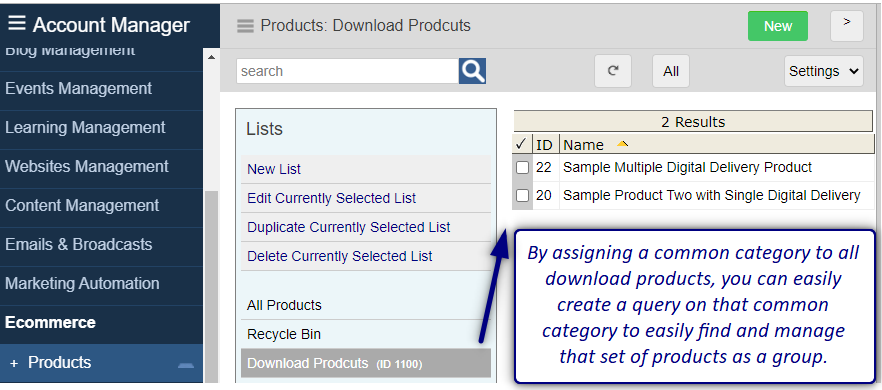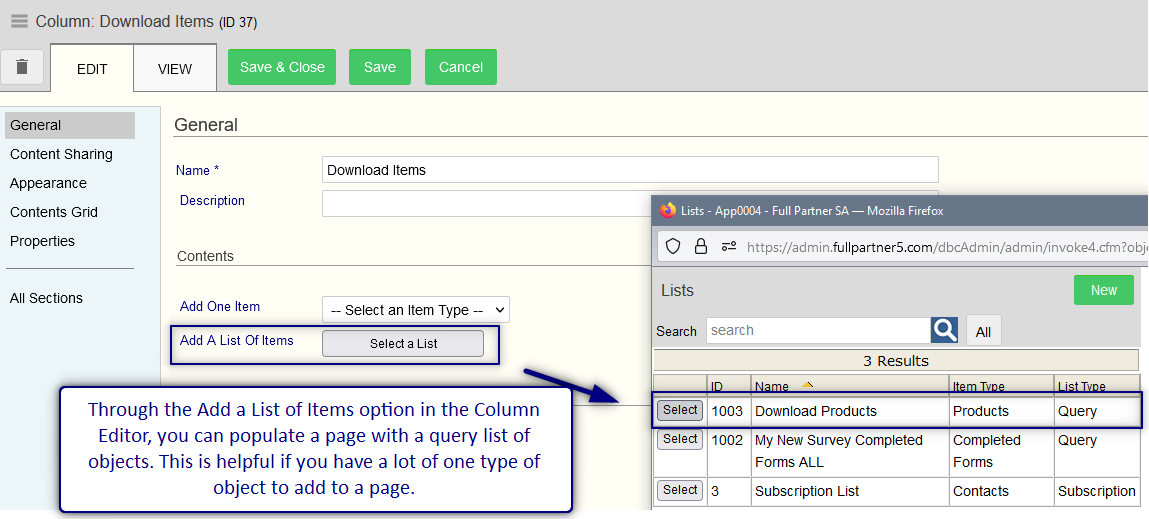© 2022 Full Partner, Inc.
|
|
Category Overview |
Category Overview
Location: Content Management/Categories
Overview: Categories are a versatile and easy way to help you tag and create a grouping of content objects under the umbrella of a common label, or “category”.
Key Info: Categories are a unique type of content object in the system in that they can be used across different content object databases to tie a variety of types of content objects together under one common category.
|
What is a Category?
Categories are basically just a label that you define and create that then can then be added to any object in your account.
Categories can be used and applied within only one database of objects, or they can span across a variety of different object types in your account depending on your needs. In either case, the category itself serves as the unique common thread that connects your content together under the umbrella of that category grouping.
How are they used?
Categories are created and then added to content objects via any given content object editor/ categories section and are used in several important and useful ways in the system that are good to understand.
Categories are used as the one of the easiest ways to create a Query Lists
The most common and core basic use of categories is to serve as a common search criteria on which to create a database query lists of related objects. The query list then serves for a foundation for a variety of other uses in different areas of the system.
Why create query lists?
Ease of use in the database finders for one thing.
Within in each database finder, you can create and save as many category-based query lists as needed. These lists will be limited to that type of object within that database finder and will assist you with your content management tasks.
A saved query list can be loaded into the finder at any time to help filter your view of the records for that object type. This filtered view can then help you to easily find and work with a predefined category-based grouping of content.
When you load a saved query list into the finder, you are then only interacting with that group of related content, this then allows you to review, sort, and edit, the narrowly focused records in a much more streamlined and efficient way than if you did not filter the finder list.
 |
Adding a large group of content to page at once.
In addition to using the query list to load a filtered view of records into the finders, you also have the ability to add groups of content objects to a page via adding the very same saved query list to a page.
The approach to populating pages with query list content has its advantages, especially when working with larger groups of content.
See here for how to add a list of content to a page column: View Image

Click Next to review the different topics about Categories, or you may jump ahead to a specific topic by visiting the Course Content page for a linked Index.
Related Topics
